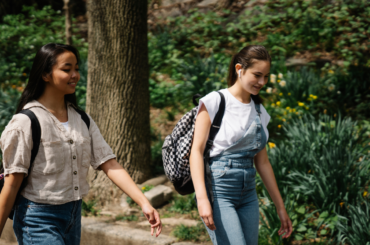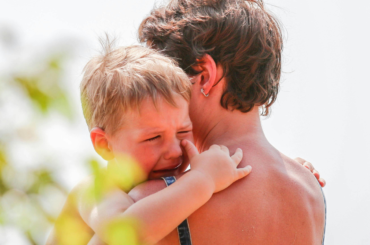As some areas of the country begin to lift pandemic restrictions, many kids (and adults) are itching to see their friends again. If and when your family is ready to take baby steps out of isolation in order to socialize with others again, you’ll want to do so wisely. Is it possible to widen your kids’ contact circles while keeping your own family safe and keeping others safe?
To find out, ParentsTogether spoke with Dara Kass, M.D., an emergency room physician and Associate Professor of Emergency Medicine at Columbia University Medical Center, in a Q&A on Facebook Live. Dr. Kass thinks that for many families, there are absolutely ways to do playdates safely—but doing so requires some extra planning and extra communication.
You know your own family best. So in addition to considering your family members’ risk factors, look at your family dynamic and what your kids need right now. For example, if you have an only child who’s been craving social interaction and everyone in your household is healthy, a first step could be to link up with another family who has been isolating to the same degree as your family, and agree to have regular playdates under certain parameters. No matter your family situation, it’s wise to consider being “exclusive” with another family or two to start, forming a “quarantine pod” of sorts in order to continue limiting everyone’s exposure.
“Invest in those relationships,” Dr. Kass urges. “Find the families that you like the most and spend the most time with them. They should be local. They should be able to get to you easily. They should bring you joy.”
When you’re choosing who to socialize with, look for families you know that are at similar risk levels. So if one adult in your household is an essential worker and at risk for exposure, for example, you may want to seek out another family that’s in a similar circumstance, because they will be the most understanding of your needs and concerns.
“Communication is key,” emphasizes Dr. Kass, so make sure it’s a family you feel comfortable being 100 percent honest with about your past and future exposure to the virus, and who would be on the same page about what to do if someone in either of your households came down with symptoms.
Priya Parker, the author of The Art of Gathering: How We Meet and Why It Matters and host of the podcast Together Apart, recommends that you have deliberate conversations with your household members and with anyone you are thinking about adding to your circle. Find out what their comfort levels and risk levels are. “If you’re all on the same page, you’re golden. If you’re not on the same page, center the needs of the person who is least comfortable and/or most at risk,” Parker writes. “Come up with an algorithm for the next two weeks that everyone agrees to. And then agree to re-visit.”
When you do plan the playdate, agree with the other adults involved (and your kids) on a set of realistic rules to limit possible viral spread via respiratory droplets, and prepare as much as you can beforehand. Speak to the other family in depth about your expectations regarding masks, distancing, food and drink, using each other’s bathrooms, end times, and other concerns. Will the gathering be outside? What activities will kids partake in?
Dr. Kass advises that even if you’re in an exclusive “pod” with another family that you see regularly, you still should make sure kids know not to do things like share drinks or reach into their friend’s snack bag. One way to make a gathering with food work well, she says, is to set up separate meal stations for each family in attendance, and actually label each one, so that you’re not sharing a serving dish with anyone outside of the group you live with. It’s even more safe if visitors bring their own cups, plates, and utensils to further reduce the risk of cross contamination.
It’s difficult to find the right balance between getting the social interaction we need and not contributing to the spread of the virus—and this can make planning playdates stressful. But, Dr. Kass reminds us, “The better testing gets and the better we understand the symptoms, the easier it’s going to be to hang out.”







